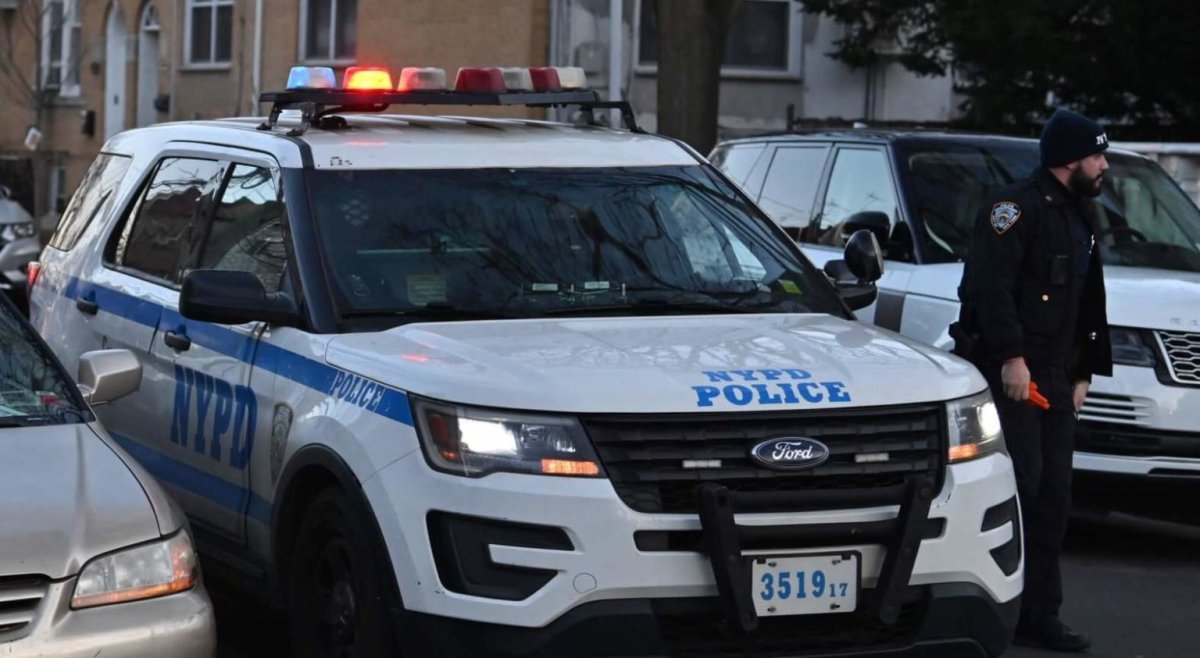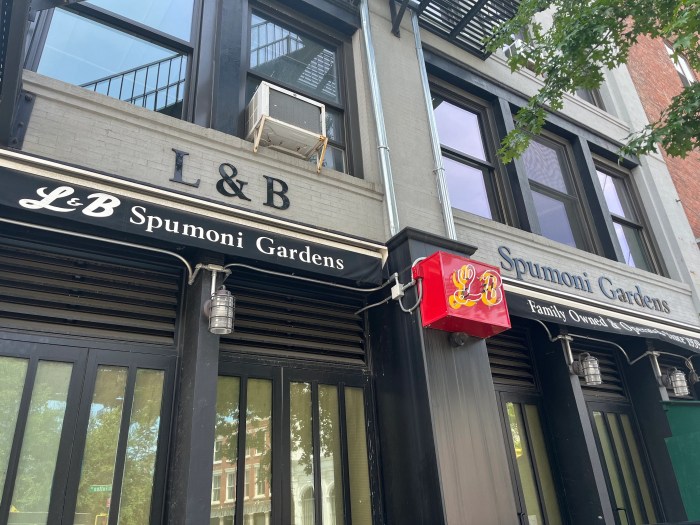By Patrick Hedlund
Meat Market cut
The developers of a planned High Line-straddling office tower in the Meatpacking District have trimmed the size of its proposed building after the project came under fire from the city and local preservationists.
The Romanoff family, which owns the property, at 437 W. 13th St. near Washington St., has been seeking a variance from the Board of Standards and Appeals to construct a high-rise much larger than what is allowed by zoning regulations.
The previous plan — which called for a 12-story, glass-sheathed office building, 215 feet tall and extending over the High Line, similar to the Standard Hotel just to the south — has now been reduced to 201 feet and eliminates the proposed cantilever above the new elevated park.
The project’s proposed use of a 7.7 F.A.R. (floor area ratio) has been trimmed to 7.1, despite the fact that the as-of-right designation only allows an F.A.R. of 5. Additionally, the building’s cellar portion to be constructed underneath the High Line has been eliminated.
The Romanoffs originally sought the “hardship” variance because the High Line passes over more than a quarter of the site, and they believe that the related construction expense prevents them from realizing a fair return on the property.
However, Department of City Planning Commissioner Amanda Burden disagreed, writing a letter to the B.S.A. in May, recommending the board deny the variance.
The applicant made a point of noting that the proposed tower would still be shorter than the Standard Hotel and nearby, still-under-construction High Line Building, even though both of those structures utilize F.A.R.’s conforming to the zoning regulations. The Romanoffs have also been criticized for planning to more than triple the size of their allowed retail space, from about 10,000 square feet permitted in the manufacturing district to 32,000 square feet.
“While the B.S.A. has not yet rendered a decision, the good news is they seem to remain skeptical about the application, and the developer has already scaled back the requested variances in response to the resistance they are facing,” read a statement from the Greenwich Village Society of Historic Preservation, which also opposes the variance.
The B.S.A. will hold its next hearing on the project on Sept. 22.
Downtown office lows
Average asking rents for Downtown office buildings have fallen more than 12 percent over the last six months, with forecasts indicating that prices could drop below $50 per square foot for the area’s highest-quality properties by next year.
According to a report from brokerage Jones Lang LaSalle, average rents for all Downtown office buildings have slipped 12.4 percent during the past six months — from $48.75 per square foot to $42.70.
The area’s top-class trophy properties, which went for an average of slightly more than $70 per square foot a year ago, have seen nearly a 7 percent decrease over the last six months — from $64.54 per square foot to $60.23.
The report stated that the sub-$50-per-square-foot scenario has already occurred at some Downtown properties. If trophy buildings were to suffer similar drops, Downtown asking rents would return to levels not seen in five years.
Rents for all Downtown office types tumbled nearly 16 percent over the last year, compared to 17 percent decrease in Midtown.
‘Smart’ development
A bill requiring city agencies to assess specific infrastructure needs related to rezoning projects in order to prepare neighborhoods facing major redevelopment will be introduced to the City Council this week.
The proposed measure, authored by Councilmember David Yassky, would require city agencies like the Departments of
Education, Environmental Protection, Sanitation and Transportation, as well as the Police and Fire Departments, to conduct impact assessments accompanying major rezoning actions. Under the legislation, called the “Smart Development Bill,” the agencies would establish relevant and specific minimum neighborhood service standards to measure the impact of rezonings on community services.
“When this bill is enacted, neighborhoods will be prepared with the needed schools, subway and bus lines, trash-disposal capabilities, fire and police needs, among others, that too often have been ignored during the development process,” said Yassky, who is running for city comptroller.
The assessments would identify current service levels in the respective area, state potential changes related to the proposed development, and include plans to implement recommended improvements in a timely manner to allow sufficient time for the city to provide the appropriate resources.
“For far too long, many communities have undergone significant rezoning and development without a correlating expansion in vital city services,” said Comptroller William Thompson, Jr., a candidate for mayor. “This legislation will go a long way to protect our neighborhoods from rapid development by providing a necessary level of review during the rezoning process.”
The current uniform land use review process, or ULURP, only requires the City Council, affected community board or boards and Department of City Planning to assess major development proposals. Under the bill, the city agencies would review projects’ applications and environmental impact statements (E.I.S.), and submit a report to City Planning outlining their impacts, as well as necessary changes in services or capital spending. These assessments would then accompany the rezoning application and E.I.S. as they move through the approval process.
mixeduse@commmunitymediallc.com


































